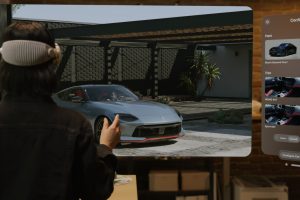Optimised packages of AI models and workflows with API have been packaged as NIMs (Nvidia Inference Microservices) which developers can use as building blocks to develop generative AI for healthcare, from drug discovery, med-tech and digital health products. Nvidia announced 25 NIMs at its developer conference, GTC 2024, offering advanced imaging, natural language and speech recognition, digital biology generation, prediction ...
Software
The latest Electronics Weekly product news involving software, such as Linux, MathWorks and PCB designers.
Run Nvidia Tao-developed AI vision models on non-Nvidia Arm hardware
Custom vision-based AI software created on Nvidia’s Tao tool set can be run on Arm based Cortex-M, Cortex-A and Ethos-U microcontrollers according to Edge Impulse, which teamed up with Nvidia to create the work-flow. “Engineers can create computer vision models that can be deployed to hardware including NXP I.MXRT1170, Alif E3, STMicro STM32H747AI and Renesas CK-RA8D1,” according to Edge Impulse. ...
Nvidia offers Omniverse Cloud as APIs
A new take on the concept of digital twins was announced by Nvidia at its developer conference in San Jose this week, as founder and CEO, Jensen Huang announced that the company’s Omniverse Cloud will be available as APIs (application programming interfaces). Customers will be able to use these APIs to design, simulate, test and build physically based digital twins ...
IP block secures FPGAs with one external IC
Protecting against IP theft, and to prevent contract manufacture hardware counterfeiting, ‘FPGA Lock’ from Nial Stewart Developments is an intellectual property block for FPGAs that communicates with Microchip’s SOT-23 ATSHA204A crypo-authentication IC. The cores uses generic Intel altsyncram and Xilinx 7 series blockram macros and occupies ~720 registers and two ram blocks. Only one pin on the FPGA is needed, ...
Collaboration is key for hardware manufacturing
Hardware needn’t be hard, says Matthias Wagner. Collaboration can make the design process as smooth as software. The adage “hardware is hard” is bound to resonate with anyone who has ever designed a PCB. Compared to software, hardware design takes more time, requires more collaborators and is significantly more prone to errors. Why is it that hardware, an industry so ...
AI assisted programming for web-linked PLC
Erqos has announced a phone and cloud connected programmable logic controller backed by an AI-based semi-automatic control code generator, and a similar tool for making matching phone apps. The DIN-rain controller, dubbed EQSP32, is built around an ESP32S3 microcontroller with Wi-Fi and Bluetooth, and the unit offers digital and analogue inputs and ouputs as well as serial busses. “EQSP32 lets ...
Try a network-on-chip configuration tool?
SignatureIP is offering a trial of its processor agnostic network-on-chip (NoC) configuration software. Called iNoCulator, the “tool enables users to find the optimal NoC configuration, and the company believes that it is the fastest on the market”, it said. “This try-before-you-buy offer will enable engineers to see for themselves just how easy it is to design a NoC with our tool.” ...
Hypervisor firmware now standard on Congatec x86 computer-on-modules
Congatec is to ship an installed hypervisor with many of its x86 computer-on-modules as standard. The hypervisor in question is related to RTS Hypervisor from Real-Time Systems – a company owned by Congatec, and installed as part of the BIOS. “It uses the same technology as RTS Hypervisor, but it is integrated in the modules” the company told Electronics Weekly, ...
Winner – Qorvo Design Tool and Development Software Product of the Year
The analogue and mixed signal simulation gives power designers the ability to evaluate designs with this free-to-use tool. In addition to SPICE basics, it supports “vast amounts of digital logic without performance penalties” for fast and accurate results for reliable power-based simulation. Judges deemed the technology “excellent”. Shortlist * Advantech Europe – DeviceOn AIoT device management and edge orchestration * ...
RTOS v Linux
When selecting the optimal OS for an embedded systems project it is important to compare the available options – will RTOS or Linux serve best? asks Graeme Wintle. At a top level, the choice is between a full OS, such as Linux, with general purpose features and a wide range of drivers, middleware and applications or a more targeted system ...
 Electronics Weekly Electronics Design & Components Tech News
Electronics Weekly Electronics Design & Components Tech News









